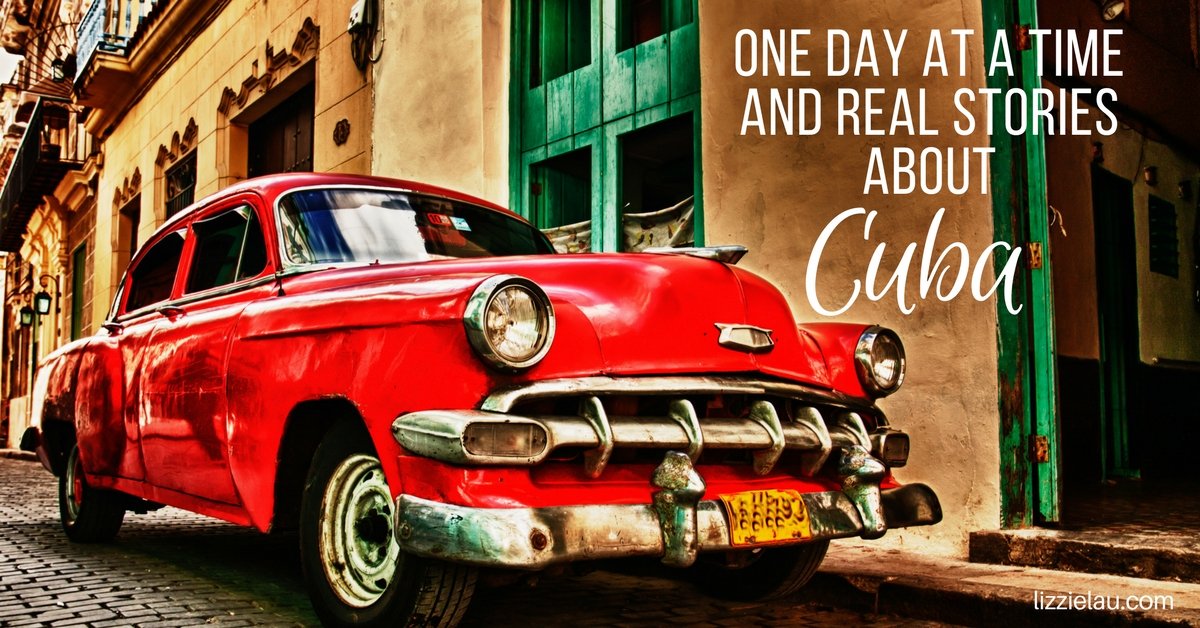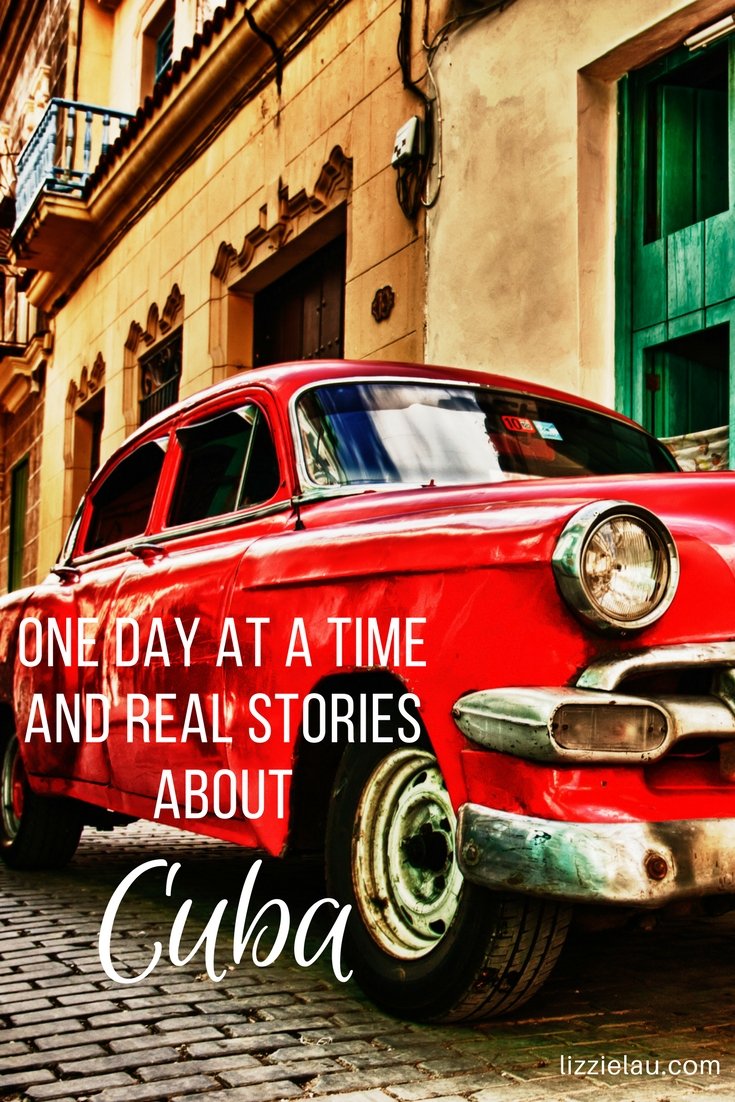 Cuba. My emotions about this country are so complicated, and I’ll tell you why in a minute, but what made me want to talk about my experiences with Cuba is the fantastic Netflix sitcom, One Day at a Time. The show is about a single Cuban-American mom who served in the military and is now back home in LA, struggling with PTSD, raising her two kids and sharing an apartment with her Mom, played by the larger than life Rita Moreno.
Cuba. My emotions about this country are so complicated, and I’ll tell you why in a minute, but what made me want to talk about my experiences with Cuba is the fantastic Netflix sitcom, One Day at a Time. The show is about a single Cuban-American mom who served in the military and is now back home in LA, struggling with PTSD, raising her two kids and sharing an apartment with her Mom, played by the larger than life Rita Moreno.
The show is light and funny, but still tackles current issues, and offers plenty of moments I like to call “conversation starters” for my daughter and I. My Mom thinks it’s inappropriate for a 7 year old, but I’ve always credited inappropriate tv for Vivi’s awesome vocabulary. The family dynamic is beautiful, and I especially love the relationship between the kids and their melodramatic abuela.
As a mom to an aspiring Latinx actress, I’m over the moon that these kind of roles are out there. Though my daughter holds both a US and a Canadian passport, she is Guatemalan on her father’s side, with a slice of Chinese a few generations back to add to the exotic mix. I don’t see us heading to Guate anytime soon, it’s a little too wild west right now, but I do want to spend some time in Mexico or Costa Rica while she’s young so she can learn Spanish. Probably not Cuba though.
1991 Cuba and CSIS
My Significant Ex and I had an interesting experience with CSIS – the Canadian Security Intelligence Agency shortly after we sent a fax to the Cuban Embassy in Ottawa. We were interested in going down to set up an aquaculture project, but first we wanted permission to send down a friend, who was a former Cuban frogman, to scout locations and investigate the possibility of Canadians setting up a business there.
CSIS called and asked my ex to come in for a chat. He complied of course and they told him that they had intercepted our fax because it had been directed to a known operative and because some of the words we’d used (exchange of information and technology) concerned them. They told us that we should be prepared to receive some kind of invitation to Cuba and warned us that if we accepted we would likely be put into some kind of compromising position and then extorted into bringing in contraband tech. At the time we were rattled for a minute, especially because they told us to assume that our phone was being tapped, and not to tell anyone what was going on! At the same time, we were pretty excited – this was real life spy craft.
1992-94 Cuba and The Bahamas
My career on the sea began with food poisoning from a famous Cuban restaurant in Miami – Puerto Sagua. My ex and I ate there with the owner of the dive boat the night before my first ever liveaboard dive trip. I had whole fried snapper with plantains, rice, and black beans. It was phenomenal going down, but it came back up all night long.
During the following four years on the M/V Sea Fever in the Bahamas, we spent part of every season doing trips to the Cay Sal Bank, which is geographically closer to Cuba than to The Bahamas. The islands here are uninhabited, but have long been a spot where Cuban refugees end up.
We always put ashore at Elbow Cay and left provisions in the ruins of the lighthouse there. We’d also reach out to the sport fishing boats we’d encounter and offer them fresh ice and sodas, because they were part of the Hermanos al Rescate, patrolling the area for rafts in an effort to get the refugees safely into US Waters. This was before the “wet foot, dry foot” policy of 1995 came into effect saying that Cubans had to set foot on American soil in order to have a chance to stay and qualify for expedited resident status – and Cubans intercepted on the water between the two nations would be sent home.
One night we arrived at one of our moorings to discover a tiny wooden boat tied to it. We approached with caution, all hands on deck, locked and loaded. The boat was abandoned, and we heard over the radio that another dive boat had picked up the 9 Cubans – including children – who had been on board and delivered them to a US Coast Guard ship. I still have a little laminated prayer card and a pack of matches we pulled from the tiny vessel. I’m ashamed to say that I don’t remember if they boarded the Coast Guard cutter in US or Bahamian waters, though it would have made all the difference in the world to them.
The boat was a well-built hazard to navigation, so we couldn’t simply set it adrift, and it would have swamped if we tried to tow it back, so we sunk it. It was tough. We shot it to pieces, hacked at it with a fire axe and put the fire hose on it. What we needed was some dynamite to breach the hull. We ended up mostly submerging it and putting a hazard to navigation flag on it with a reflector. We could have done that in the first place, but it wouldn’t have been as exciting.

1999 Refit in Little Havana
X2 and I worked on a 105′ Cheoy Lee Cockpit Motor Yacht for nearly 11 years. Shortly after getting this gig we took the yacht from Cozumel to Florida for a much-needed refit and paint job.
There we met a Cuban born diesel mechanic who told us the stories of his not one, but two escapes from Cuba. His first attempt failed miserably when his friend was shot and killed during their capture, and he was sent to prison. When he was released he climbed right back onto a raft to flee once again, this time successfully.
Listening to Cuban-Americans talk wistfully and reverently about the Cuba of their childhoods, before Castro, is heartbreaking. Even though they are Americans, and have raised families here, they still dream of a home that will never be what it once was. Meanwhile, we embraced the local Cuban culture and never ventured into a Starbucks if there was a Cuban espresso joint nearby.
After another refit a few years later, we had to rescue another yacht which lost power off the coast of Cuba.
2006 Havana Stopover
I’ve only ever set foot on Cuban soil one time, on a stopover from Roatan, Honduras to Milan, Italy, or maybe it was on the way back. The Blue Panorama charter flight picked up and dropped off passengers there so we hung out in the airport for a couple of hours drinking Café Cubano and eating Cuban Sandwiches, though if I recall correctly, they simply call it café and sandwiches there.
If you’re curious about what Cuba is like in the years since Fidel Castro’s death, here’s an interesting article from Public Radio International.


Never been to Cuba! I would love to visit this amazing country!
This is an interesting read. Your episode with the CSIS is quite interesting. It will equally be interesting to know how much of private conversations these agencies have access to, nowadays.
Cuba is an amazing place. You seen some great places Lizzie. And also cool blog. Can’t wait to read your book.
I am working on a book. I saw an article today that I wanted to reference and went looking for my manuscript. Couldn’t find it in Evernote or GDrive. It’s possible it’s still handwritten in my last bullet journal. I’ll look again tomorrow. Good grief.
You really do have some amazing advnetures lady. Are you writing a book soon?